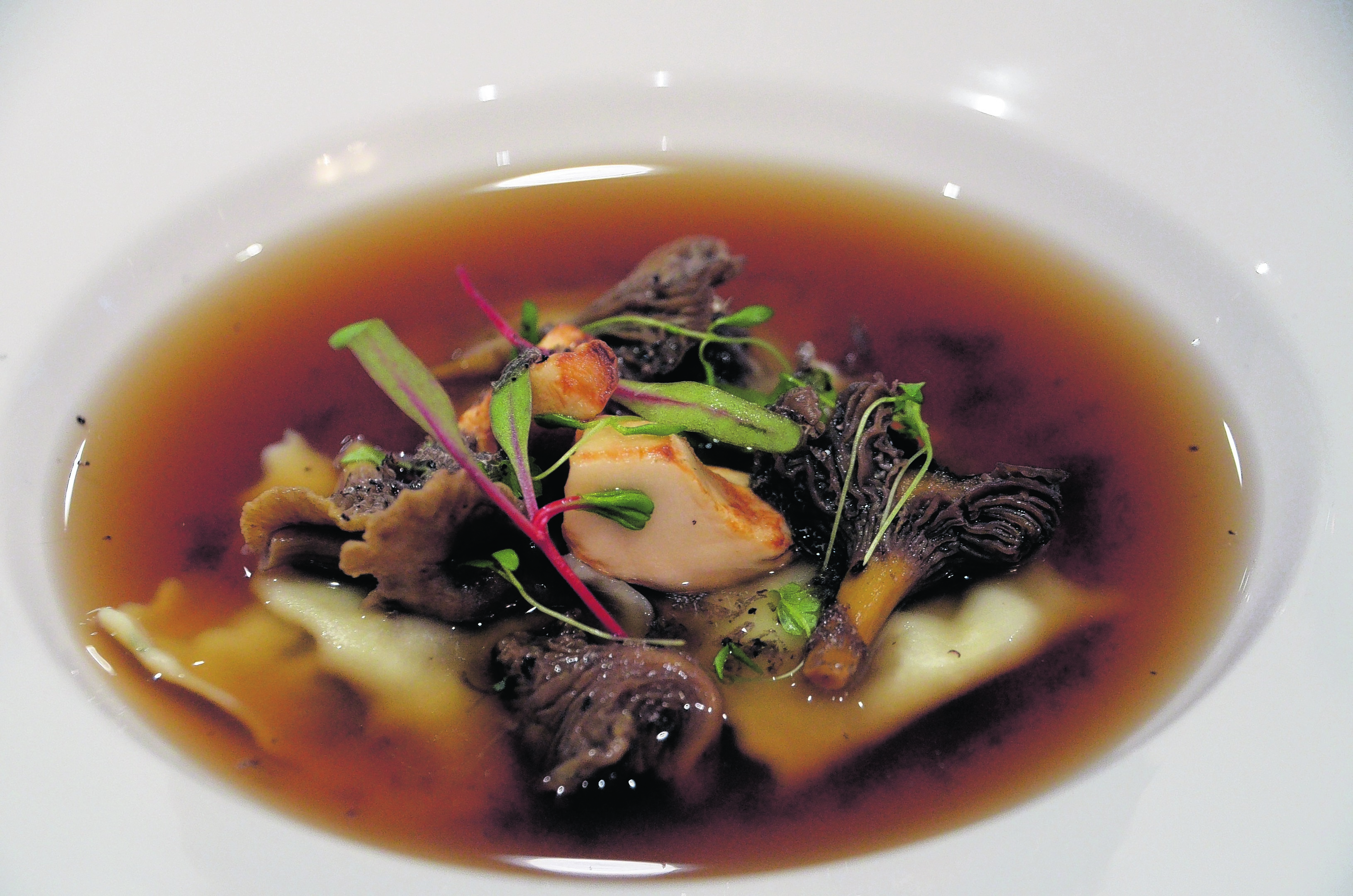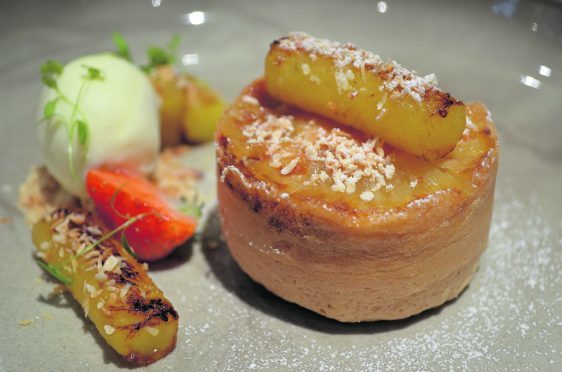Modern British with a classical element is how Nigel Mendham likes to cook: “I start with the ingredients that are in season and then I come up with some ideas to create a dish around them,” he explains.
Preferring his cooking to do the talking, Mendham’s passion for creating delicious cuisine has been recognised by a number of accolades, including a Michelin star and three AA Rosettes for his stint at the prestigious Samling Hotel in the Lake District. But it’s his latest role, as executive head chef at Dukes London hotel’s signature restaurant Thirty Six, that has given him a stage for his latest venture, the British Larder menu.
Marrying seasonal ingredients, sourced from top British suppliers, with timeless culinary traditions, he explains the inspiration behind the project stems from “requests for simple, home-cooked food”.
Mendham has come up with some British classics – with a twist, finding innovative ways to “put a different take on each dish to make it my own”.
Drawing on his childhood – summers spent picking clams and crabbing on the Norfolk coast, before going home to cook with his mother – nostalgic dishes on the menu include Fish And Chips, Lobster Thermidor and Pineapple Upside Down Cake.
Try Mendham’s classics for yourself…
Mushroom Consomme
Serves 6

1kg mushrooms, plus a selection of wild mushrooms to serve (most supermarkets stock these)
75g carrots
75g leeks
75g onion
40g flat leaf parsley
1tsp curry powder
1 bay leaf
1 sprig thyme
2L water
Salt and pepper
Fresh mushroom ravioli to serve (optional)
Finely dice the vegetables and cook with the curry powder until soft. Add the herbs and water, then simmer for 45 minutes.
Pass through a muslin cloth, and then return to the heat and reduce to 380ml. Check seasoning.
Cook your wild mushrooms (sauteeing for around eight minutes should do it).
Serve the consomme in dishes with the wild mushrooms. To make the dish heartier, add some fresh ravioli.
SOUTH DOWNS VENISON WITH PARSNIP, PEAR, CHARRED SPROUTS AND SULTANA REDUCTION
South Downs venison with parsnip, pear, charred sprouts and sultana reduction
Serves 4
3-4kg venison saddle (you’ll be using the loins so could just ask your butcher for venison loins to serve four)
100g butter
300ml vegetable stock
50ml double cream
600g parsnips
200g purple sprouts, with the tops on (though standard, trimmed varieties will work just as well)
Salt and pepper
Parsnip crisps to serve, optional
For the sultana reduction
1 bay leaf
200g sultanas
100g port
20g capers
100g water
For the pear puree
540g fresh pear juice (bought or made)
6g agar-agar (available at Lakeland, Waitrose and Ocado)
Lemon juice for seasoning
Salt
To make the pear puree, bring the pear juice to simmer, whisk in the agar-agar and then bring to the boil, whisking continuously for two minutes. Put in a container and chill. When set, cut into pieces and blend until smooth. Season with lemon juice and salt.
To prepare and cook the parsnips, peel and then from the thick end, slice into one-inch pieces until you get halfway down the parsnip, then set aside. With the parsnip that is left, cut into small pieces.
Melt the butter in a heavy-bottomed saucepan until foaming. Add the parsnip and a pinch of salt, cover and cook slowly until soft. Add the vegetable stock and bring to the boil. Add the double cream and bring to the boil again, then blend until smooth. Check the seasoning then set aside.
To make the sprouts, clean them (keeping some of the outer leaves for garnish) and then bring a large pan of water to the boil. Boil the sprouts for four to five minutes, put into ice water, and then drain. Cut the cooked sprouts in half and saute in a heavy-based frying pan. Season and set aside.
To make the sultana reduction, mix all of the ingredients together, place in a pan, cover and simmer for 20 minutes. Remove the bay leaf, and then blend until smooth and set aside.
When ready, if using a venison saddle, remove the loins and all sinew. Pan fry the loins in a large frying pan for two minutes on each side, and then remove from the pan and allow to rest.
To plate up, warm the blended parsnips and arrange with the venison loins on top. Arrange your sprouts on the plate, along with the pear puree, garnish with parsnip crisps (optional) and sprout tops and drizzle with the sultana reduction.
Pineapple upside down cake
Serves 6
For the cake:
4 eggs
Tinned pineapple slices (in juice not syrup, drained well)
150g self-raising flour
1tsp baking powder
Pinch salt
200g caster sugar
1/2 vanilla pod
1tbsp melted butter
For the roasted pineapple
1 whole pineapple
100ml pineapple juice
Zest of 1 lime
2tsp lime juice
100g unsalted butter
For the custard:
150ml milk
150ml double cream
1 vanilla pod
4 egg yolks
30g caster sugar
For the cocnut ice cream:
5 egg yolks
400ml coconut milk
150ml condensed milk
250g coconut puree (available from health food shops or make your own by blitzing fresh coconut with a little water)
Rock salt
Lime juice, to taste
5g stabiliser
To garnish:
Desiccated coconut
Coriander cress (optional)
For the coconut ice cream, whisk the egg yolks until pale and creamy.
Bring the coconut puree, milk and condensed milk to the boil in a pan. Pour the mixture over the eggs, and then return to the pan and cook until thick enough to coat the back of a spoon.
Sieve, season with rock salt and lime juice. Freeze and churn. (Add the stabiliser at the end but before freezing, if using)
To make the cake, set the oven to 160C. Caramelise the pineapple slices then set aside.
Sieve together the flour, baking powder and salt.
Separate the eggs. Whisk the egg whites to form soft peaks, and then slowly add the caster sugar and whisk until stiff.
Whisk the egg yolks and vanilla until thick and yellow, then fold into the egg whites. Next fold in your flour mixture, followed by the melted butter.
Into individual moulds, place one ring of pineapple in each, and then half fill with the cake mixture.
Bake until golden brown and a knife comes out clean. Allow to cool.
For the roasted pineapple, peel the pineapple and remove the core, then cut into one-inch cubes. In a mixing bowl, mix together the pineapple juice, lime juice and lime zest.
Add the pineapple cubes and marinate for 12 hours.
When ready, remove from the liquid and dry on paper towel.
Heat a large non-stick pan. Add the pineapple cubes, turning so that all sides take colour. Add the butter and cook for a further one minute. Set aside.
For the custard, bring the milk, cream and vanilla to simmer in a pan.
Whisk the eggs and sugar together until pale and creamy, then pour in the milk mixture and continue to whisk. Return the mixture to the pan and cook until thick enough to coat the back of a spoon.
Sieve and set aside.
When ready, toast the desiccated coconut. Plate up the cake and roasted pineapple, garnish with a scoop of ice cream, coriander cress (if using) and a sprinkle of toasted desiccated coconut.
